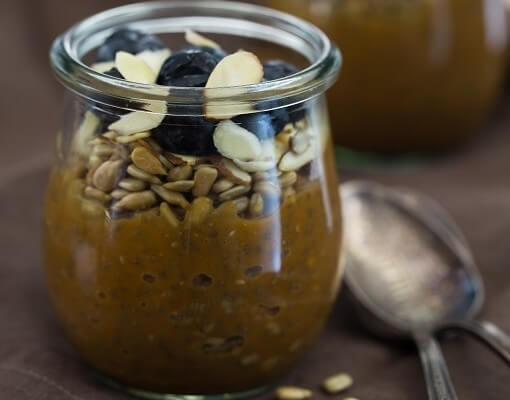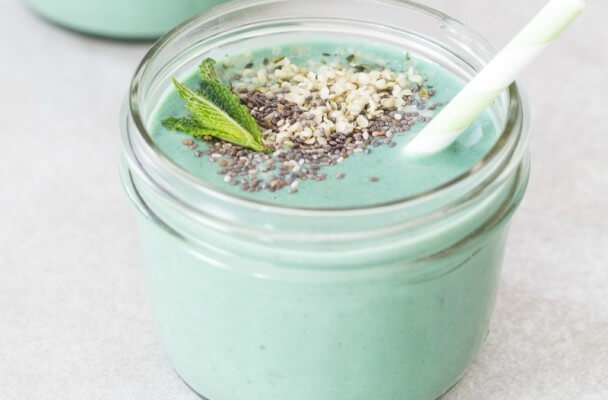Paleo Diet
Humans evolved millions of years ago in a much different environment than our own. The so-called Paleo diet takes its name from the Paleolithic period, which began when humans first started to use stone tools. The theory behind the diet is that our modern pattern of food consumption contributes to obesity and chronic disease. By altering our eating habits to more closely resemble those of Paleolithic humans, we achieve weight loss and better health.
The Paleo Diet Philosophy
Although the broad concepts behind the diet emerged in the 1970s, public awareness of the Paleo diet took off after Dr. Loren Cordain published his 2002 book, “The Paleo Diet.” Now, millions of people adhere to Paleo principles when choosing the foods they eat.
The premise behind the Paleo diet (or "caveman diet") emerged from anthropological studies suggesting that our hunter-gatherer ancestors had much lower incidence of cardiovascular disease, obesity, and other chronic health problems. Our genetic makeup is nearly unchanged from Paleolithic times, but our surroundings have been completely transformed. Modern agriculture has led to high intake of cereal grains, starchy fruits and vegetables, and factory farmed meats. Paleo adherents argue that by minimizing these modern food groups and emphasizing the foods available to our pre-agricultural ancestors, we can achieve better health.

Core Concepts of the Caveman Diet
Proponents of the Paleo diet suggest that we must dramatically alter our pattern of food intake to become similar to hunter-gatherers (O’Keefe & Cordain, 2004). This includes:
- Increasing protein intake. Hunter-gatherers lived in a world where wild game was a significant portion of their diets, when available. The Paleo diet considers animal products to be a staple. Diet adherents are encouraged to eat grass-fed beef, chicken, seafood, and other animal products.
- Decreasing carbohydrate intake. Not all carbohydrates are equally bad under the Paleo diet. However, starchy foods that have a high glycemic index – meaning that they trigger spikes in blood sugars – must be avoided. Non-starchy fruits and vegetables, including berries, apples, watermelon, peaches, plums, zucchini, broccoli, spinach, and eggplant are acceptable Paleo foods.
- Increase fiber consumption. Dietary fiber reduces levels of “bad” LDL cholesterol and decreases cardiovascular risk (Brown et al., 1999). Under the Paleo diet, it is important to get dietary fiber from non-starchy vegetables instead of the whole grains suggested by other diet plans.
- Moderately high fat intake. Fat has gotten a bad rap in our modern world. In fact, some forms of fat are beneficial for health and decrease risk of chronic disease. The Paleo diet emphasizes the importance of polyunsaturated and monounsaturated fats. Nuts and seeds make excellent Paleo snacks. These foods are good sources of healthy omega-3 fatty acids. Paleo adherents also believe that moderate amounts of saturated fats, which are often found in animal products, do not significantly increase risk of disease.
- Reduce sodium intake. The modern American diet includes high levels of sodium because of the prevalence of processed foods. Paleolithic bodies were much more accustomed to receiving higher doses of potassium but lower amounts of sodium. Almonds, leafy green vegetables, and bananas are good sources of potassium.
- Promote alkaline food consumption. Once foods are digested, some are acidic while others are alkaline (basic pH). Eating too much alkaline food can affect kidney and bone health. Thus, it is important to reduce cheese, legumes, and dairy products, which are alkaline foods.
- Eat plant phytochemicals. Fruits and vegetables are natural sources of vitamins, minerals, and other beneficial nutrients. These include phytochemicals with antioxidant effects, meaning that they boost cellular health and fight off disease. Eating across the color spectrum of fruits and vegetables is an important part of a Paleo diet.
Scientific Research Supporting the Paleo Diet
Some scientists agree that the use of the Paleo diet for weight loss and health. For example, a study by researchers at the University of California-San Francisco School of Medicine had participants eat their regular diet for three days before spending 10 days on the Paleo diet (Frassetto et al., 2009). They found that even this relatively short time on the diet resulted in lower blood pressure, reduced plasma insulin, and lower cholesterol levels. More research is needed to expand upon these findings and determine whether the Paleo diet works well for the general population.
Criticisms of the Paleo Diet
The Paleo diet is not without its criticisms. Some doctors worry that the diet could lead to calcium deficiency, contributing to osteoporosis (Pitt, 2016). Others simply believe that the premise behind the diet is flawed. Our Paleolithic ancestors had a much shorter life expectancy and may also have experienced chronic disease (Jabr, 2013). Furthermore, eating whole-grain foods that are banned under the Paleo diet may actually improve overall health. If you are interested in the Paleo diet, approach it with a cautious eye to keep yourself safe and healthy.
For more recipes and snacks, check out our Paleo Snacks page!
Paleo Recipes'

Pumpkin Chia Seed Pudding Recipe
This palatable pudding provides a paleo breakfast when made with all-natural almond milk. Start the day off right with a low-calorie meal that’s full of fiber and other essential nutrients.
Ingredients: Milk, pumpkin puree, chia seeds, maple syrup, pumpkin spice, sunflower seeds, sliced almonds, fresh blueberries.
Total Time: 10 minutes
| Yield: 4 servings

Protein-Packed Detox Smoothie Recipe {vegan}
This superfood smoothie supplies 10 grams of fiber, 19 grams of protein, 20% of the Daily Value (DV) for potassium, 150% of the DV for vitamin A, and an abundance of both calcium and iron.
Ingredients: Almond milk, frozen banana, spirulina, hemp protein powder (optional), fresh mint, chia seeds, hemp hearts.
Total Time: 5 minutes
| Yield: 2 servings
Healthy Eating
- Healthy Snacks
- Healthy Highlights
- 5 Uses for Cacao Powder
- 5 Ways to Eat Farro
- 6 Best Gluten-Free Foods
- Alcohol and the Body
- Almond Flour Recipes
- Anti-Aging Superfoods
- Beat the Afternoon Slump
- Benefits of a Plant-Based Diet
- Benefits of Baobab
- Benefits of Cashews
- Benefits of Coconut Oil for Hair
- Benefits of Coconuts
- Benefits of Dates
- Benefits of Fenugreek
- Benefits of Garcinia Cambogia
- Benefits of Goji Berries
- Benefits of Kale Chips
- Benefits of Monk Fruit Sweetener
- Benefits of Peanuts
- Benefits of Pecans
- Benefits of Pistachios
- Benefits of Pumpkin Seeds
- Benefits of Spelt Flour
- Benefits of Steel Cut Oats
- Benefits of Sunflower Seeds
- Benefits of Tiger Nuts
- Benefits of Turmeric
- Benefits of Walnuts
- Benefits of Wheatgrass
- Best Food Fads
- Cacao vs Cocoa
- Caffeine-Free Energy Foods
- Chocolate That's Good for You
- Diet vs. Exercise
- Fat Burning Foods
- Food Myths Debunked
- Foods for Bone Density
- Foods for Colon Health
- Foods for Healthy Hair
- Foods for Healthy Skin
- Foods to Help Sleep
- Foods to Reduce Stress
- Green Tea Benefits
- Healthy Baking Flours
- Heart Healthy Habits
- High Protein Health Risks
- How to Boost Your Metabolism
- How to Lose Weight While Aging
- How to Throw a Vegan BBQ
- Kaniwa vs Quinoa
- Little Health Foods
- Low-Carb: Fad or Friend?
- Making Healthier Desserts
- Mediterranean Diet Meal Plan
- Natural Beauty Products
- Nuts for Weight Loss
- Preparing Vegan Meals
- Preventing Muscle Degeneration
- Rare Superfoods
- Reduce Sugar Intake
- Save Time By Going Vegan
- Smarter Snack Swaps
- Smoothie Ingredients
- Soy Protein vs Whey Protein
- Starting a Plant-Based Diet
- Steel Cut vs Rolled Oats
- Sugar Substitutes
- Vegan Proteins
- Vegan Substitutions for Fall Recipes
- Why Go Vegan
- Healthy Meals
- Healthy Recipes
- Sports Nutrition
- Vitamins, Minerals & Nutrients
